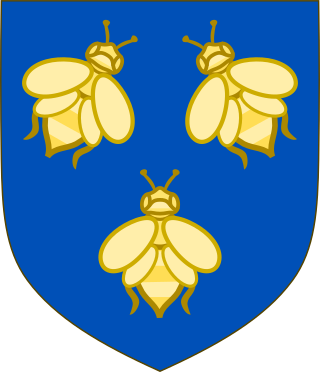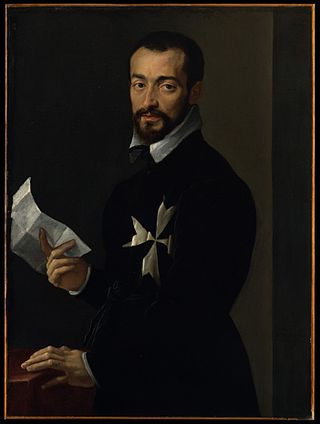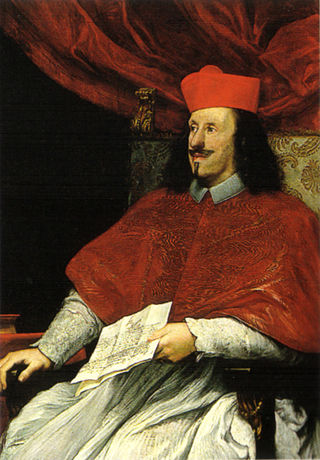Related Research Articles

Lorenzo di Piero de' Medici, known as Lorenzo the Magnificent was an Italian statesman, banker, de facto ruler of the Florentine Republic, and the most powerful and enthusiastic patron of Renaissance culture in Italy. He was a magnate, diplomat, politician and patron of scholars, artists, and poets. As a patron, he is best known for his sponsorship of artists such as Botticelli and Michelangelo. He held the balance of power within the Italic League, an alliance of states that stabilized political conditions on the Italian peninsula for decades, and his life coincided with the mature phase of the Italian Renaissance and the Golden Age of Florence. On the foreign policy front, Lorenzo manifested a clear plan to stem the territorial ambitions of Pope Sixtus IV, in the name of the balance of the Italian League of 1454. For these reasons, Lorenzo was the subject of the Pazzi conspiracy (1478), in which his brother Giuliano was assassinated. The Peace of Lodi of 1454 that he supported among the various Italian states collapsed with his death. He is buried in the Medici Chapel in Florence.

Pope Sixtus IV was head of the Catholic Church and ruler of the Papal States from 9 August 1471 to his death in August 1484. His accomplishments as pope included the construction of the Sistine Chapel and the creation of the Vatican Library. A patron of the arts, he brought together the group of artists who ushered the Early Renaissance into Rome with the first masterpieces of the city's new artistic age.

Pope Leo XI, born Alessandro Ottaviano de' Medici, was head of the Catholic Church and ruler of the Papal States from 1 April 1605 to his death in 27 April 1605. His pontificate is one of the briefest in history, having lasted under a month. He was from the prominent House of Medici originating from Florence. Medici's mother opposed his entering the priesthood and sought to prevent it by having him given secular honours, but after her death he eventually was ordained a priest in 1567. In his career he served as Florence's ambassador to the pope, Bishop of Pistoia, Archbishop of Florence, papal legate to France, and as the cardinal Prefect for the Congregation of the Bishops and Religious. He was elected to the papacy in the March 1605 papal conclave and served as pope for 27 days.

The House of Medici was an Italian banking family and political dynasty that first consolidated power in the Republic of Florence under Cosimo de' Medici, during the first half of the 15th century. The family originated in the Mugello region of Tuscany, and prospered gradually until it was able to fund the Medici Bank. This bank was the largest in Europe during the 15th century and facilitated the Medicis' rise to political power in Florence, although they officially remained citizens rather than monarchs until the 16th century.

Filippino Lippi was an Italian painter working in Florence, Italy during the later years of the Early Renaissance and first few years of the High Renaissance.

Luca Giordano was an Italian late-Baroque painter and printmaker in etching. Fluent and decorative, he worked successfully in Naples and Rome, Florence, and Venice, before spending a decade in Spain.

Pietro da Cortona was an Italian Baroque painter and architect. Along with his contemporaries and rivals Gian Lorenzo Bernini and Francesco Borromini, he was one of the key figures in the emergence of Roman Baroque architecture. He was also an important designer of interior decorations.

Giuliano da Sangallo was an Italian sculptor, architect and military engineer active during the Italian Renaissance. He is known primarily for being the favored architect of Lorenzo de' Medici, his patron. In this role, Giuliano designed a villa for Lorenzo as well as a monastery for Augustinians and a church where a miracle was said to have taken place. Additionally, Giuliano was commissioned to build multiple structures for Pope Julius II and Pope Leo X. Leon Battista Alberti and Filippo Brunelleschi heavily influenced Sangallo and in turn, he influenced other important Renaissance figures such as Raphael, Leonardo da Vinci, his brother Antonio da Sangallo the Elder, and his sons, Antonio da Sangallo the Younger and Francesco da Sangallo.

Antonio da Sangallo the Younger, also known as Antonio Cordiani, was an Italian architect active during the Renaissance, mainly in Rome and the Papal States. One of his most popular projects that he worked on designing is St. Peter’s basilica in the Vatican City. He was also an engineer who worked on restoring several buildings. His success was greatly due to his contracts with renowned artists during his time. Sangallo died in Terni, Italy, and was buried in St. Peter’s Basilica.

Ferdinando II de' Medici was grand duke of Tuscany from 1621 to 1670. He was the eldest son of Cosimo II de' Medici and Maria Maddalena of Austria. He was remembered by his contemporaries as a man of culture and science, actively participating in the Accademia del Cimento, the first scientific society in Italy, formed by his younger brother, Leopoldo de' Medici. His 49-year rule was punctuated by the beginning of Tuscany's long economic decline, which was further exacerbated by his successor, Cosimo III de' Medici. He married Vittoria della Rovere, a first cousin, with whom he had two children who reached adulthood: the aforementioned Cosimo III, and Francesco Maria de' Medici, Duke of Rovere and Montefeltro, a cardinal.

Ferdinando I de' Medici, Grand Duke of Tuscany was Grand Duke of Tuscany from 1587 to 1609, having succeeded his older brother Francesco I.

The House of Barberini are a family of the Italian nobility that rose to prominence in 17th century Rome. Their influence peaked with the election of Cardinal Maffeo Barberini to the papal throne in 1623, as Pope Urban VIII. Their urban palace, the Palazzo Barberini, completed in 1633 by Bernini, today houses Italy's Galleria Nazionale d'Arte Antica.

Ferdinando de' Medici was the eldest son of Cosimo III de' Medici, Grand Duke of Tuscany, and Marguerite Louise d'Orléans. Ferdinando was heir to the Grand Duchy of Tuscany, with the title Grand Prince, from his father's accession in 1670 until his death in 1713. He is remembered today primarily as a patron of music. An excellent musician himself, he attracted top musicians to Florence and thus made it an important musical center. Through his patronage of Bartolomeo Cristofori, Ferdinando made possible the invention of the piano.

Lucrezia Maria Romola de' Medici was an Italian noblewoman, the eldest daughter of Lorenzo de' Medici and Clarice Orsini and mother of Maria Salviati and Giovanni Salviati. Her portrait was considered as the baby Jesus in Our Lady of the Magnificat of Sandro Botticelli.

Jacopo Salviati was a Florentine politician and son-in-law of Lorenzo de' Medici. On 10 September 1486 he married Lorenzo's daughter Lucrezia de' Medici, with whom he had ten children. The son of Giovanni Salviati and Maddalena Gondi, he devoted himself to the economic affairs of the family, becoming very wealthy. He then engaged in political life. He was Prior of the Guilds in 1499 and 1518, then gonfaloniere of Justice in 1514. In 1513, he was appointed ambassador to Rome.

Benedetto Pamphili was an Italian cardinal, patron of the arts and librettist for many composers.

Giancarlo de' Medici was an Italian cardinal of the House of Medici. He was the second son of Grand Duke Cosimo II of Tuscany and his wife, Maria Maddalena of Austria, and the brother of Ferdinando II de' Medici, Grand Duke of Tuscany.
Francesco Bocchi was an Italian writer of the late Renaissance, active in Florence.

Giovanni Corsi was a noble Italian Marquis, Knight, Patron, Ambassador and Senator of Florence in 1637. He was the second Marquis of Caiazzo, title he inherited after Bardo Corsi death in 1624.

The Altoviti are a prominent noble family of Florence, Italy. Since the medieval period they were one of the most distinguished banking and political families appointed to the highest offices of the Republic of Florence, friends and patrons of Galileo Galilei, Vasari, Raphael, and Michelangelo. They had a close personal relationship with the papacy. Through a predominant endogamous marriage policy they established alliances with dynasties of principal and papal nobility as the Medici, Cybo, Rospigliosi, Sacchetti, Corsini, and Aldobrandini.
References
- ↑ Mannerist Paintings and Sculptures; Issue 4, Page 146; Heim Gallery, 1970.
- ↑ The twilight of the Medici: late baroque art in Florence, 1670-1743; Detroit Institute of Arts, Founders Society, Palazzo Pitti, 1974, page 86.